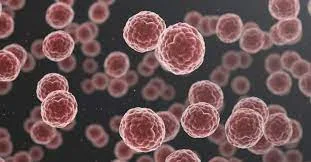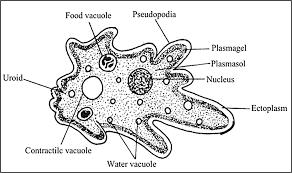class 8th Notes for Cells
class 8th science
ICSE/ CBSE Notes-
For more Notes click this link https://cbsenotesallsub.blogspot.com/
cells
1- A cells is considered to be the fundamental unit of life
2- A cell is defined as the basic smallest structural and functional unit of an organism.
3- They are complex units that are microscopic in nature.
4- It can carry out the life process like reproduction, nutrition respiration
5- A cell is capable of independent existence
6-A cell forms a basic structural and fundamental unit of life.
 |
| cells |
 |
| cells structure |
For more Notes click this link https://cbsenotesallsub.blogspot.com/
Discovery of the Cell
Robert Hooke in 1665 observed slices of cork under a simple magnifying device. Cork is a part of the bark of a tree.
The term ‘cell’ was first invention by Robert Hooke in the year 1665 when he noticed slice of cork by a microscope
Shape and size of Cells
For more Notes click this link https://cbsenotesallsub.blogspot.com/
1- According to the functions performed by the cells they are different shapes and sizes
2-The neurons or nerve cells are long so that they can carry messages from one part of the body to another.
3- The largest cell in the human body is the -OVUM
 |
| fig Ovum |
For more Notes click this link https://cbsenotesallsub.blogspot.com/
4- The longest cell in the human body is Neurons or Nerve Cells
 |
| fig-Nerve cell |
5- The smallest cell of the human body is Sperms
 |
| fig- Sperms |
For more Notes click this link https://cbsenotesallsub.blogspot.com/
According to number of cell organisms are -
1-unicellular organisms
An organism can be made up of a single cell unit and they are called unicellular organisms like an amoeba, paramecium, etc.
 |
| fig- amoeba |
2-multicellular organism
An organism made up of many cells is called a multicellular organism like human beings, plants etc
 |
| multicellular |
For more Notes click this link https://cbsenotesallsub.blogspot.com/
Types of Cells
There are two types are cells are given below
1-Prokaryotic cells
2-Eukaryotic cells
Prokaryotic – Size: generally small ( 1-10 µm)
- The nucleus is not well defined and known as a Nucleoid
- Single, circular chromosome.
- Membrane-bound organelles absent. Eg: Bacterial cell
Eukaryotic – Size: generally large ( 5-100 µm).
- The nucleus is well defined and surrounded by a nuclear membrane.
- Possess more than one and linear chromosome.
- Membrane-bound cell organelles are present. Eg: Human cell.
Where 1 µm = 10 −6m.
For more Notes click this link https://cbsenotesallsub.blogspot.com/
Cell Structure and Function
1-Each living organism has many organs
2-Each organ in the system performs different functions such as digestion, assimilation and absorption.
3-Similarly, different organs of a plant perform specific functions. For example, roots help in the
absorption of water and minerals.
4-Each organ is further made up of smaller parts called tissues.
5-A tissue is a group of similar cells performing a specific function.
6-The cell in a living organism is the basic structural unit.
Parts of the Cell
The basic components of a cell are
1-Cell membrane
2-Nucleus
3-Cytoplasm
1-Cell membrane
1- The membrane separates cells from one another and also the cell from the surrounding medium.
2- The cytoplasm and nucleus are enclosed within the cell membrane, also called the plasma membrane
3-The plasma membrane is porous and allows the movement of substances or materials
both inward and outward.
4-The boundary of the onion cell is the cell membrane covered by another thick covering
called the cell wall.
For more Notes click this link https://cbsenotesallsub.blogspot.com/
2-Nucleus
- Nucleus is the most important part of cell.
- It control and also gives the direction of cellular activities.
- It control every cells of the body so we can say that nucleus is control room of the cells
- Shape of the nucleus is spherical
- Nucleus is established at the center of cell ,which is surrounded by cytoplasm
Properties of Nucleus
- Nucleus is apart from the cytoplasm by a membrane called the Nuclear membrane
- Nuclear membrane is POROUS in nature , it allow entry and exit of some selected materials
- Nucleus is filled with transparent granular substance named NUCLEOPLASM
Chromosomes
- Chromosomes are present in nucleus.
- Its structure is like a thread.
- It carry GENES.
- Genes help to transfer of character from one generation to another generation
- The whole system which contain Cytoplasm and nucleus is called PROTOPLASM
3-Cytoplasm
- Cytoplasm is the space between the cell membrane and nucleus.
- This space is filled by translucent jelly like fluid
- Cytoplasm includes all cell organelles ,in which Nucleus not include.
These organelles are given bellow-
- Mitochondria
- Plastids
- Endoplasmic reticulum
- Golgi complex
- Lysosomes
- Ribosomes
- Vacuole
- Centriole
- Cilia and flagella
- Micro Tubular
For more Notes click this link https://cbsenotesallsub.blogspot.com/
1- Mitochondria
- Mitochondria is the Powerhouse of the cell.
- Its shape are cylindrical or spherical.
- Mitochondria enclosed by a double Membrane.
- It provide energy to the cells by the process of cellular respiration.
- This energy is stored in the form of ATP
2-Plastids
- Plastids is large organelles found scattered in plant cells.
- Plastids are mainly three types
- chromoplast- It found in flower ,it is coloured plastids
- chloroplast- it contain green colour pigment called chlorophyll,which is involved in photosynthesis.
- Leucoplast- it is colourless plastids , it store fat ,proteins,carbohydrate
3-Endoplasmic reticulum
It is the the Network of inter connecting membrane filled with fluid.it is found in to types
1-Smooth Endoplasmic reticulum- It have NO ribosome and synthesize lipids
2-Rough Endoplasmic reticulum - It have ribosome and synthesize protein
Golgi complex
- It discovered by C.Golgi in 1898.
- The function of Golgi body is secretion.
Lysosomes
- It make an interacellular design
- It is filled with digestive enzymes
- It contain suicidal bags
Ribosome
- It consist RNA (ribonucleic acd) and protien
- It help in protein synthesis
Vacuole
- Mostly it found in plant cell.
- It is single membrane bound organelle filled with fluid.
- It help in osmoregulation to maintain the osmotic pressure of food
Centriole
- They are two cylindrical rod shaped structure.
- It is close to nucleus.
- it help in the formation of spindles during the cell division
- It is microscopic hair like structure.
- it is projecting on the cell surface
- it help in moment in unicellular organisms.
Micro Tubular
- it maintain the cell shape.
- it isin the form of structure
For more Notes click this link https://cbsenotesallsub.blogspot.com/






Very good notes
ReplyDeleteComplete notes bhejiye sir
ReplyDeleteHelpful notes
ReplyDelete